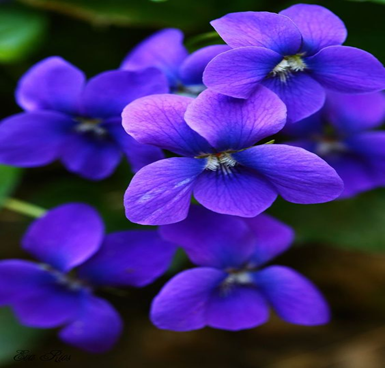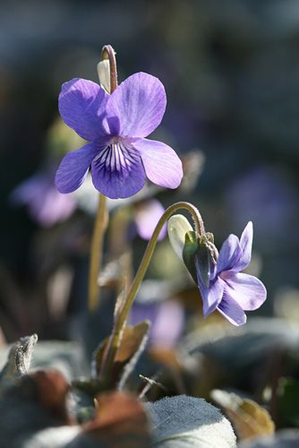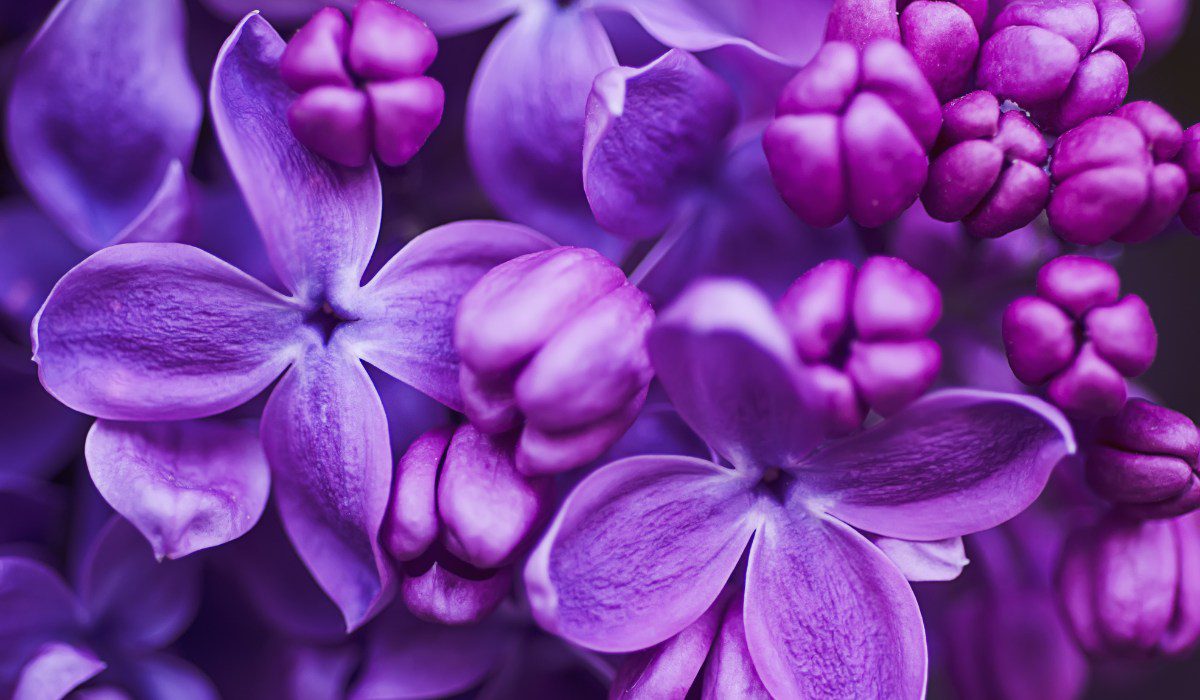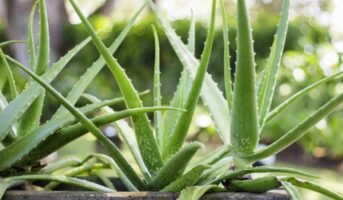More than 500 species, including annuals, perennials, and even subshrubs, belong to the genus Viola. They are all together referred to as violas, despite the fact that the distinctive garden types are more frequently called pansies (Viola × Wittrock Ana), Johnny-jump-ups (Viola tricolour), or violets (Viola sororia and others). Countless hybrids and cultivars of viola flowers exist in every conceivable colour, in addition to the pure species types.
Most of the fast-growing violet cultivars used as garden plants are annuals with few flowers or short-lived perennials. Thanks to self-seeding, many violets will return each year. Additionally, violets are edible blooms that make interesting salad elements and garnishes. Additionally, they can be candied to create a frosted effect and used to garnish cakes and other sweets.
The cooler months are when violets bloom the most. The length of the violet flower is influenced by the climate. They are perfect for beginning and ending the growing season in colder climates as well as for bridging the seasons in warmer climates where they can remain in bloom throughout winter. Climate also has an impact on when to plant violets. They can also be planted in the fall in locations without severe winters, but they are commonly planted in cool climates in the spring.
Violet flower: Quick facts
| Species name | Violet spp. |
| Family name | Violaceae |
| Synonyms | Violets, pansy, sweet violet |
| Height | 4-10 inch tall |
| Plant type | Perennial |
| Native area | North America and Europe |
| Environmental impact | Positive |
| Maintenance | Low |
| Blooming time | Spring and fall |
Violet flower: Genus
The Violet plant belongs to the Viola genus from the Violaceae, a family of flowering plants comprising around 1,000 species in around 25 genera. Some Viola species are perennial plants while others are annual plants. Some plants are also small shrubs. Several species and plant varieties are widely used in gardens for their ornamental flowers.
Violet flower: Varieties
Pansies and violets are identical from a technical standpoint. However, there are other additional violet species in the genus that go by various other names. They comprise:
Violet x Wittrock Ana: This hybrid, also referred to as the common garden pansy, is a short-lived perennial or biennial with bigger flowers. However, in colder climates, it’s typically grown as an annual. Plants have 2- to 3-inch flowers that can be plain or patterned, and they grow to a height of about 8 inches. With numerous cultivars available, this violet is the most well-liked of the bunch. It grows successfully in pots and baskets.
Violet tricolour: Sometimes known as Johnny-jump-up, is a tiny plant that is related to pansies genetically. As the spilt seeds grow into volunteer seedlings, some hybrid pansies will go back to being Johnny-jump-ups. It is frequently used as a filler or as a border plant in gardens.
Violet sororia: Often known as the wild blue violet, is a plant that, unless it is deliberately encouraged in native woodland gardens, is typically regarded as an invasive species on grass lawns and manicured gardens. It frequently travels to woodland places because it is native to such areas.
Violet cornuta: Often known as the tufted or horned violet, it has a smaller blossom than the pansy. These are perennials that spread widely, bearing 1 1/2-inch, two-toned flowers above a rosette of leaves that reaches a height of 6 to 10 inches.
Violet flower: Cultivation
Growing violets from seeds is easy. Despite their eagerness to self-seed throughout your garden, volunteers may bloom much later in the season due to cold weather. If you wish to start one indoors, the procedure is pretty easy. Start the seed 8 to 12 weeks before transplanting. Although mature violets may tolerate brief cold spells, young transplants may be harmed. If a gardener in a warm region plans to transplant in the fall, they should start their seeds in the middle of the summer.
- Sterilised potting mix should be poured into tiny pots or flats to about 1/4 inch below the top edge. In each cell or pot, scatter two to three seeds, then lightly cover with the additional moistened potting mix. Cover the seeds thoroughly since violet seeds need darkness to germinate.
- Place in a warm environment while keeping wet (65 to 70 degrees Fahrenheit). The top of the fridge is in an excellent position. Seed germination should begin within 10 to 14 days. When the seeds have sprouted, move them to a window with light or under a grow lamp.
- When the first genuine leaves appear, you must remove weaker-looking seeds from the pot or cell by pinching or cutting them at the soil line. It’s appropriate to have a temperature between 55- and 60- degrees Fahrenheit right now. You can also start providing your seedlings with any dependable, balanced, water-soluble fertiliser.
- When the weather and temperature are suitable for transplanting outdoors, start hardening off the seedlings by allowing them to spend progressively longer periods of time outside over the course of 10 to 14 days. Starting with one to two hours, progressively increase their sun exposure. During this stage of “hardening off,” make sure the soil doesn’t dry up.
- You can permanently put the seedlings into the garden or into their outdoor pots once they have gotten used to spending entire days outside.
Another approach is to plant seeds directly in the garden; however, this technique works best when there is a long growing season. After thoroughly filling the planting area with organic matter, loosen the soil and spread the seeds. After adding a thin layer of dirt, thoroughly hydrate the region. Ensure that the seedbed is moist. Move the excess seeds to other locations as you space the seedlings out to a distance of 6 to 8 inches as they grow.

Source: Pinterest
Violet flower: Care and maintenance
Light
Violets dislike heat but prefer the sun over the shade. When the weather is cool in the spring, this is not an issue. Ensure they receive some shade during the hottest part of the afternoon when planting in the summer.
Soil
A peat-based potting mix or garden soil that has been heavily treated with organic material is the ideal growing medium for soil pansies and other violets. The addition of peat moss to garden soil will help make it a little more acidic, as violets prefer slightly acidic soil.
Water
While letting the soil dry between treatments, water frequently. They can endure brief periods of drought, but frequent watering will help them grow to their full potential.
Humidity and temperature
Early spring temperatures between 40- and 70- degrees Fahrenheit are ideal for violet growth. They also flourish in cooler climates. The stress of high temperatures will be lessened by mulch and water.
With the right care, violets can bloom all summer long and will typically bloom once again in the fall. They can also be dug up and replaced with another flower during the summer, especially in hot, southern climes, and then replanted in the fall when the temperature becomes cooler.
Fertiliser
Incorporate a slow-release fertiliser into the ground. To encourage an autumn bloom, fertilise twice—once in the spring and once in the late summer.
Pruning
You can promote blossoming and extend the flowering season by pinching off faded blossoms at the base of the flower stem. To aid in their recovery, trim lanky or overgrown plants back to a height of 3 to 4 inches.

Source: Pinterest
Violet flower: Uses
Lower your blood pressure
Because the violet plant contains alkaloids and flavonoids, its leaves can lower blood pressure. Blood vessels are relaxed by alkaloids. As a result, our blood flow will be much easier. We all know that healthy blood circulation keeps our blood pressure from rising.
Alleviate coughs
Have you had enough of that constant coughing? Using violet leaves may help you stop coughing. Violet leaf decoction or hot violet tea can be a potent expectorant because they contain compounds that are good for the lungs, like mucilage and saponins. It is also suggested as a treatment for bronchitis.
Pain-killer
Salicylic acid is an excellent painkiller and anti-inflammatory found in violet leaves. It has a similar effect to aspirin in reducing pain from headaches, arthritis, and other inflammatory conditions.
Treat skin conditions
The leaves are advantageous for the skin as well. It offers the most effective cure for some difficult-to-treat skin conditions, including acne, psoriasis, and eczema. You can apply the leaves as a compressor to topical treatment in this situation. The leaves efficiently treat skin irritation and itchiness.
Manage haemorrhoids
Rutin is abundant in violet leaves. Rutin is frequently present in haemorrhoid remedies. This is so because rutin has excellent anti-inflammatory properties that reduce haemorrhoid irritation. Any varicose veins medication also contains rutin.
See Also: Balsam Flowers: The Ideal Choice for Every Home
Violet flower tea: A soothing beverage for relaxation
Traditionally, Violet flower has been used in making tea, which is known for its pleasant aroma. The tea is known to have a refreshing taste and many health benefits. Fresh violet flowers are directly used for preparing the tea.
Violet flower skincare: Benefits
Violet flower is widely known for its healing properties, which is why it is used in skincare. The flowers and leaves of the plant are used for their medicinal benefits. Excess exposure to heat in summers can aggravate the skin, causing problems like sunburns, inflammation, redness or dehydration. Violets are known to have a cool, and moist constitution, and thus are beneficial for the skin.
FAQs
How dangerous are violet flowers?
As long as the planters don't make violets toxic by over-fertilising and using insecticides, they will continue to be non-toxic to people.
Violet flowers grow how quickly?
Very quickly. After the seeds are sown, violets take 12 to 14 weeks to blossom.
Do violets grow well indoors?
Yes. The best perennials for adding splashes of colour to your home are violets in pots.
Housing News Desk is the news desk of leading online real estate portal, Housing.com. Housing News Desk focuses on a variety of topics such as real estate laws, taxes, current news, property trends, home loans, rentals, décor, green homes, home improvement, etc. The main objective of the news desk, is to cover the real estate sector from the perspective of providing information that is useful to the end-user.
Facebook: https://www.facebook.com/housing.com/
Twitter: https://twitter.com/Housing
Email: [email protected]











